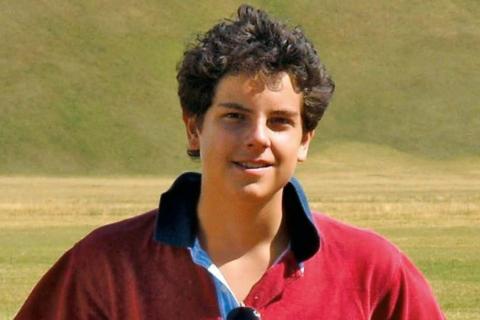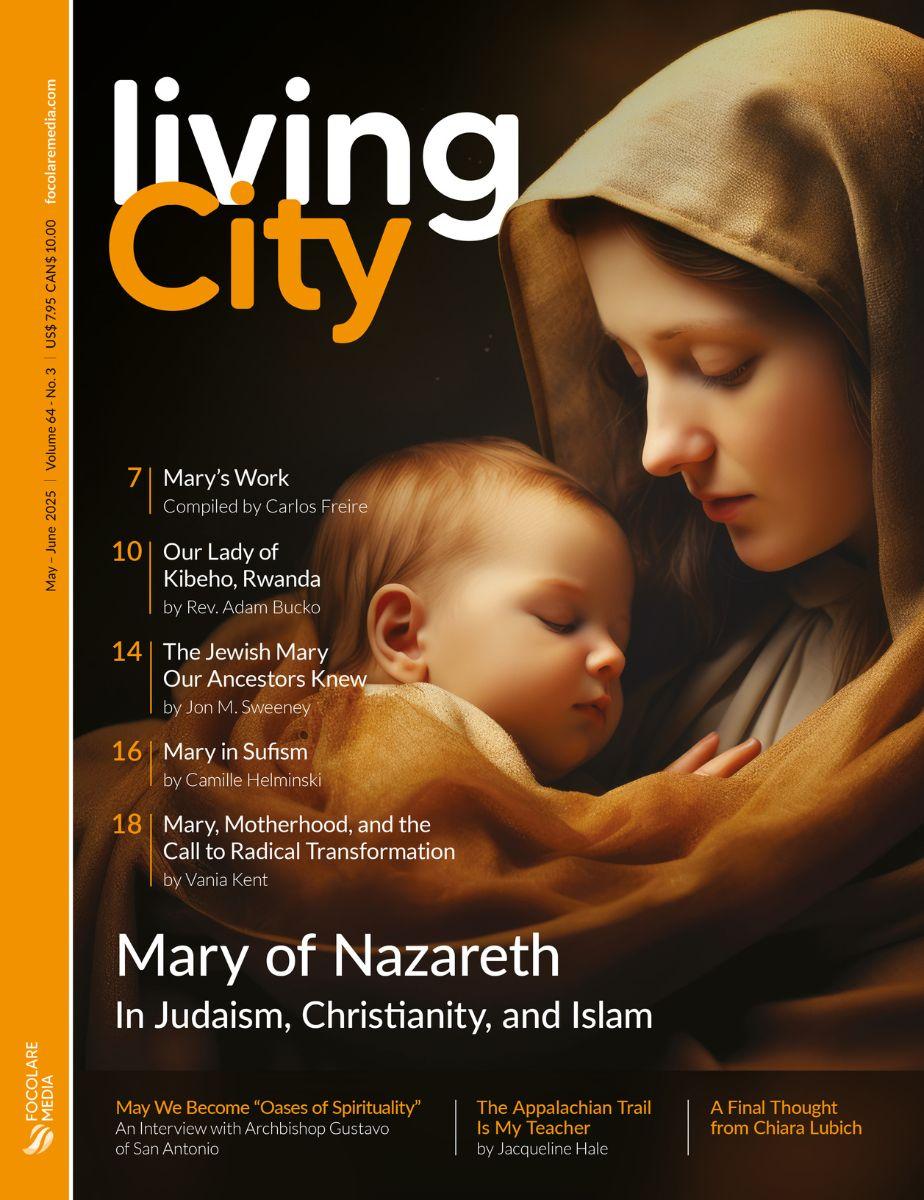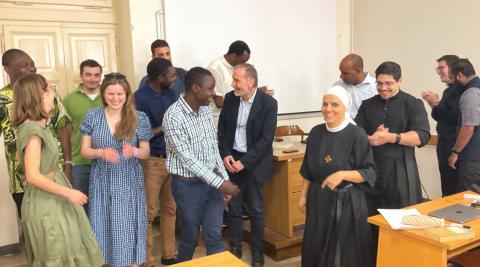
©Photo by Parliament of Religions
The Ninth Parliament of the World’s Religions took place in Chicago August 14-18, 2023, bringing together more than 7,000 people from ninety-five nations, representing 210 diverse religions, spiritual expressions, indigenous traditions, and ethical convictions. I was a last-minute replacement on a panel of three women titled “Creating Inclusive Sacred Spaces: Interfaith Dialogue, Contemplation, and Action,” moderated by Julia Walsh, Franciscan Sister and founder of the Fireplace Community in Chicago.
Ustazah Liyana Rosli Asmara, the Muslim panelist, is the youngest and first woman director of Harmony Center, an interfaith hub under the initiative of the Islamic Religious Council in Singapore. Deepa Patel is a Sufi guide, founding director of Slow Down London, and a skilled facilitator of interfaith dialogues. My own work is helping others create inclusive contemplative spaciousness in their own hearts and homes, which then may radiate out into their work in the world.
What do all three of us have in common? How do we create inclusive contemplative space: an interfaith center, an interfaith dialogue, or an interfaith heart? I outlined twelve characteristics of sacred space which can be incorporated into any life or neighborhood around the world.
1. Smiles
An inclusive contemplative space is a place of smiles. A smile on my face expresses the openness and welcoming spirit deep inside me. Zen Buddhist Thich Nhat Hanh says, “If we are not able to smile, then the world will not have peace.” How can we smile when we are sad? “You need to smile to your sorrow,” he teaches, “because you are more than your sorrow.”
2. “Strong Back, Soft Front”
My Tibetan Buddhist friends in Boulder, Colorado emphasize the importance of a “strong back” to sit up straight in meditation practice. In contrast, they emphasize a “soft front” as we engage the world. A soft front may literally provide a place of embrace, comfort for the afflicted, rest for the weary, easily recognized in a smiling face and open arms.
3. Seeing
An inclusive contemplative space is a place where we truly see one another. Many in our world today feel unseen, ignored, even invisible, both individuals and entire populations. “Hello,” our typical American greeting, seems inadequate. I love the Persian greeting my friend from Afghanistan taught me. In English it means, “Seeing you, I am made very happy.” I also love the South African greeting which translates, “I see you, indeed, I see you.”
4. Listening
Not a superficial listening where we nod our heads and mumble “Uh huh, uh huh, yes,” but a deep listening. As St. Benedict said, we need to listen “with the ears of the heart.”
5. Stories
An inclusive contemplative space is a place of deep listening to people’s stories: their places of origin, native languages, and customs, their journeys from “there” and “then” to here and now, why they had to make these journeys, and what they hope for their children. Listening to people’s stories means not only hearing the words but every nuance in their body language as well.
6. Suffering
We need to create places for suffering and tears as well as smiles. Our personal stories are often full of anguish over both small and terrible ills and injustices, traumas, and displacements, violations of our human rights and our basic human dignity. Listening to tales of suffering begins to heal the suffering.
7. Silence
In response to suffering and even joy, we are often speechless when we come face-to-face with the ineffable Mystery of Life. We need to be at home in the silence, sometimes the only appropriate response, manifested in our “soft front,” our quiet tears, our tender touch.
8. Names
An inclusive contemplative space is a place of naming. It’s vital to call people by their own names, no matter how hard it is to pronounce them. Our names are one way to express who we really are. We are not faces in a crowd or mere numbers, but individual human beings with unique stories, symbolized by our names. And in the end, we all have but one name.
9. Celebration
Our stories may be full of tragedy, but there is still much to celebrate: family, friends, food, music, poetry, prayer, holy days and holidays. We need to share these celebrative aspects of life with one another as signs of the resilience of the human spirit. When we celebrate, we silence those “fearful voices that feed off and profit from our anxiety…because we feel at home in ourselves and the world,” to paraphrase Joe Primo from Grateful Living.
10. Service
An inclusive contemplative space is a place of service. We need strong backs not only for meditation practice but for the hard work of helping one another, those close at hand and others around the globe. The Parliament of the World’s Religions is a great resource for finding creative efforts we can join to serve both local and global communities.
11. Differences
Merely tolerating or accepting differences is not enough. We need to celebrate them. In my experience, this unfolds in stages. First, we perceive our differences and may even feel frightened or threatened, whether we face a “foreign” person or a “foreign” idea. Then as we go deeper, we discover our commonalities and rejoice in how alike we are. In the third stage, we recognize again how different we may be, but on a whole new level, full of curiosity, wonder, and a spirit of exploration. We do not fear contamination by the “other” but rejoice in cross-fertilization. We say with Sikh leader Valarie Kaur, founder of the Revolutionary Love Project, “See no stranger. You are part of me I do not yet know.”
12. Vulnerability to Conversion
This is the greatest lesson I’ve learned in over forty years of interfaith dialogue, inspired by pioneer Raimon Panikkar, son of a Roman Catholic Spanish mother and a Hindu Indian father. His teaching does not mean that I convert to Buddhism after dialogue with Buddhists, no. It means that I convert to a different kind of Christianity because of my encounter with Buddhism. I become an inclusive Christian like Panikkar, discovering in myself “the terrain where the Hindu, the Muslim, the Jew and the atheist may have a place – in my heart, in my intelligence, in my life.”
An Open Kitchen—#13
Those were the twelve characteristics of sacred space I outlined in my talk on the panel of women at the Parliament. Then, I experienced how the Sikh community feeds people at lunchtime. So now, let me offer a thirteenth characteristic.
An inclusive contemplative space is an “open kitchen,” as we experienced at the Parliament through the generosity of the international Sikh community. The Sikh religion is the fifth largest in the world. The first Sikh Guru, Nanak Dev Ji, began the tradition of langar, the Sikh word for a community meal. At Darbar Sahib, the Golden Temple in Amritsar, Punjab, India, the Sikhs feed over 100,000 people for free every day. The tradition upholds their principle of equality between all people, regardless of religion, color, caste, creed, age, gender, or social status.
As we arrived at the huge tent set up outside on the lawn at McCormick Place in Chicago, we were warmly greeted by the first group of Sikhs. Then we removed our shoes and washed our hands, signs of humility and purity of heart. Another group of Sikhs covered our heads with white scarves and led us into the tent where we all sat on the ground as a sign of our common humanity. We were all served the same nourishing and delicious meal by hundreds of Sikh men and women clothed all in white, except for a few colorful turbans, including the main chef, who wore orange.
I went to visit the open-air kitchen to see how it was possible to feed over 3,000 people every day of the Parliament with rice, daal, salad, yogurt, and a sweet dessert. I was fascinated by the cylindrical “oven” that baked the naan so simply, hot bread removed from the sides skillfully in seconds with loving hands and long black tongs.
The atmosphere of this free lunch created by reverent Sikhs, who considered it their privilege to serve us, was the holiest space at the entire Ninth Parliament. And, it seems to me now, an “open kitchen” is the perfect metaphor not only for the Parliament of the World’s Religions, but for our own personal contemplative spaces, and for the whole planet. What will it take to make the whole world an open kitchen?












